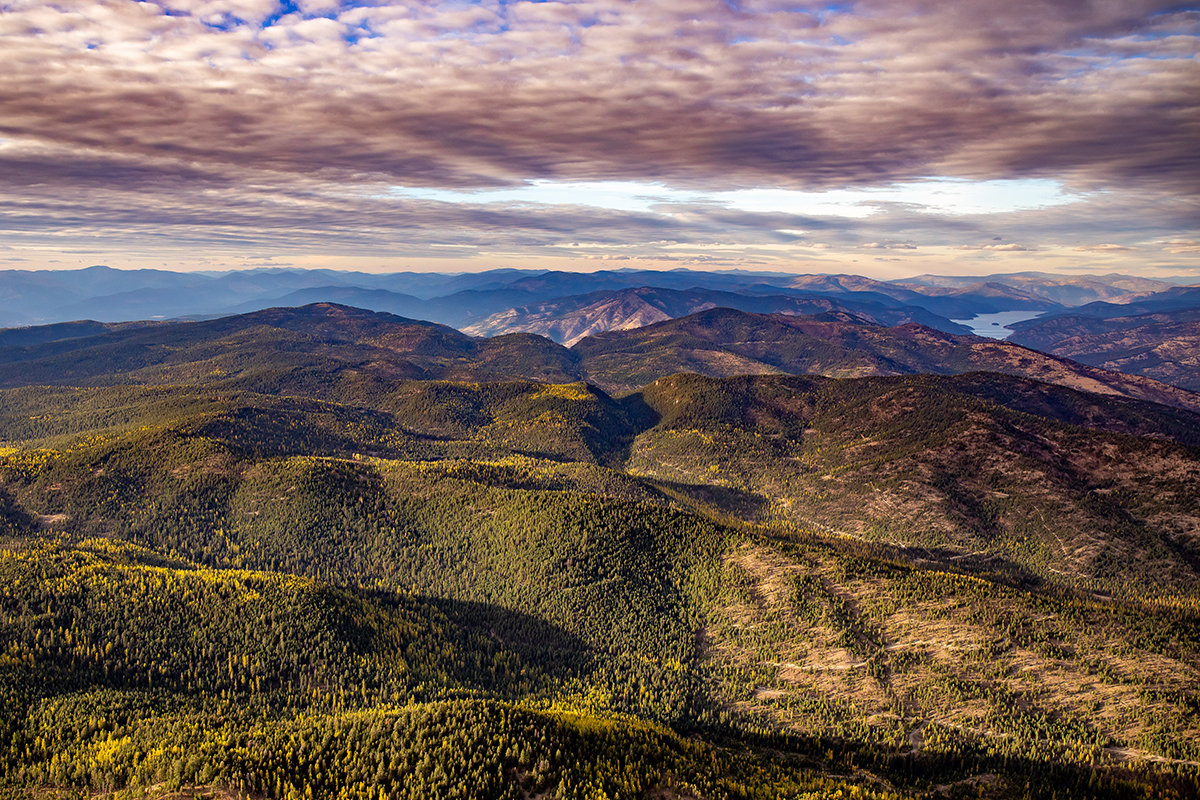FWP Recommends Easement Purchase on 27,000 Acres Near Libby
Latest Forest Legacy Program-funded project would retain private timberland interests while preserving fish and wildlife habitat, allowing permanent public access
By Tristan Scott
Montana Fish, Wildlife and Parks (FWP) is moving forward with a recommendation to the Fish and Wildlife Commission to purchase a conservation easement on more than 27,000 acres of timberland near Libby, which would dovetail with other projects that have cumulatively helped conserve over 200,000 acres of connected wildlife habitat and working forestlands in Northwest Montana.
The property, known as the Kootenai Forestlands Phase II Conservation Easement, is currently owned by Stimson Lumber Company, which is one of the oldest continuously operating integrated wood products companies in the U.S., with roots dating back to the 1850s. Under the proposal, FWP would hold the conservation easement and Stimson would retain ownership of the land and continue to sustainably manage it for timber production. The easement would preclude development, protect important wildlife habitat and key landscape connectivity, and provide permanent public access and recreational opportunities on the property.
FWP released the proposed project for public input from June 29-July 28 and received 71 public comments, with 68 expressing support and two opposed; one comment was a question. To review the comments and FWP’s responses in its environmental assessment, visit https://fwp.mt.gov/news/public-notices.
Completion of the project would build on the success of other large conservation easements nearby, all of them funded by the U.S. Forest Service Forest Legacy Program. Those projects include the 142,000-acre Thompson-Fisher Conservation Easement, the 28,000-acre Kootenai Valleys Conservation Easement, and the 22,295-acre Kootenai Forestlands Phase I Conservation Easement, which was the first phase of the current proposal. Forest Legacy projects in Montana and Idaho have cumulatively helped conserve over 300,000 acres of working lands.
The proposed project would protect key winter range and a movement corridor for elk, mule deer, white-tailed deer, and moose, according to the agency’s environmental assessment. In addition, it would protect critical habitat for federally protected species such as bull trout, grizzly bear and Canada lynx. The project would also reduce the potential for human-wildlife conflicts that often result when wildlife habitat is developed for residential use, “especially conflicts with grizzly bears, black bears and mountain lions,” the assessment states.
The property currently provides over 26,500 days of annual public hunting and angling use, which would be secured in perpetuity under this proposal.
According to a summary of public comments, one letter writer supported the acquisition of the conservation easement, but expressed concerns about whether FWP personnel would be on hand to monitor the property to ensure that forest management practices and recreational uses align with the values of a public conservation easement.
“I hope you’ll have signage telling loggers and recreators and hunters that this is a public conservation easement to protect wildlife and wildlife habitat as reminders and an education program to teach people about conservation and compassion for all users,” the comment states.
In its response, FWP clarified that the project is not a “public” conservation easement, but rather one that FWP will hold with the land remaining in private ownership.
“FWP would not be on-site managing the day-to-day activities occurring on this property because management of this property would remain the purview of the landowner, Stimson Lumber Company, as long as the terms of the conservation easement and guidance in the [Multi-Resource Management Plan] are adhered to,” according to the agency’s response. FWP would monitor the property annually to ensure the terms of the conservation easement are being followed, but the agency would not monitor for potential conflicts between recreational uses, such as hikers, mountain bikers and ATV users.
“The main goal of this conservation easement is to prevent residential and commercial development of the property while allowing the property to continue to be managed as a working forest,” the agency stated. “Public recreation access on the property would be allowed so long as it does not interfere with the conservation values, but decisions on how to approach conflicts between user groups would be up to the landowner.”